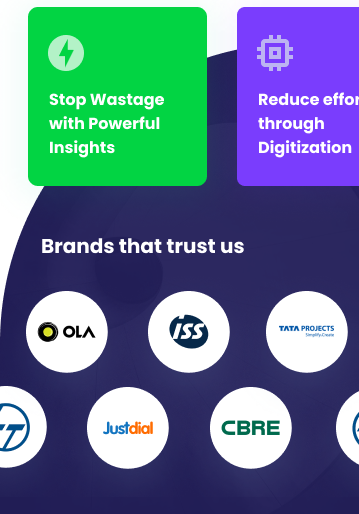The commercial real estate segment is transforming rapidly. Stakeholders are now slowly adopting piecemeal tech-based solutions to manage and operate their properties. Yet, the struggle to record, maintain, and utilize data at one location seems to be a persistent issue for everyone involved.
Also, the over-reliance of CRE operators and managers on spreadsheets is omnipresent. Recording information about the tenants, managing the maintenance schedule, and overseeing staff requirements becomes quite tedious. Further, there is no support available to view every piece of information at a glance.
Having a unified view of all the data related to a commercial property will enable the stakeholders to manage their properties better. Consequently, it will allow them to make data-driven decisions, and improve the value proposition of the property. Also, the tenants will have more clarity and transparency of the offerings while renting space.
A commercial real estate analytics dashboard can perform all of these mentioned above. It helps you to unlock more value for your property and help manage your resources better.
Commercial real estate: The chaos within
The commercial estate sector has been dealing with several persistent issues that hinder its management and operation. These tasks are often repetitive and mundane. The primary problem is the lack of structured property management or asset intelligence.
True, information about the leasers or knowledge of facilities and supplies status might be available, but accurate visibility is often deficit. Further, the information flow is often slower due to manual detection, inspection, and communication. Also, there is a lack of transparency and visibility in percolating the information to various parties involved. Despite having facility managers and support crew available at the property, these issues exist.
Since there is a time and cost factor involved for every stakeholder, data collection and flow inconsistencies often result in a lack of business intelligence. The operator and owner are delayed in optimizing the facilities in the property, and regular operations become mismanaged due to a shortage of actionable data.
The paucity of real-time data also affects the building administration and facilities manager. They are left to guesswork in managing the building maintenance, office facilities, and workplace supplies. Moreover, monitoring space management, cost-sharing of shared amenities, overall budget management, surveillance, and power usage become tedious.
These eventually cause the tenant to lose trust and leave them frustrated, and the property value dwindles.
Establishing a new order
The issues related to commercial real estate are pretty extensive. Therefore, a dashboard showing all the property-related data at a single glance can make quite a difference. It can improve operational efficiency, save time, reduce redundant tasks, and optimize costs.
Know Your Building™ platform allows activity tracking on a real-time basis. It offers the required business intelligence to the operators for running their commercial property effectively. The platform analyzes the space utilized, monitors electricity usage status, improves surveillance, and tackles contingencies.
The Know Your Building™ platform includes a solution dashboard that shows every crucial information related to the property, improving its operation and management. The views can be adjusted according to the end-users and deliver data of all the tenants, power usage, budgetary details, and other such details.
As the consumption and cost are shared with every stakeholder, operators can maintain transparency and build trust. In addition, the information helps deliver a better experience, which subsequently improves the value offering of the property. The solution dashboard can include multiple properties, provide a consolidated view of the operational budget, earnings, and operational disruptions, and help the operators take proactive steps to mitigate any issue.
The tenants also benefit from the solution dashboard. They can view the expenses incurred, facilities used, and energy consumed. Further, they can also check out the building maintenance schedule and plan their work accordingly. They can also share feedback or details of any property shortcomings with the facility manager on the go and solve them sooner.














